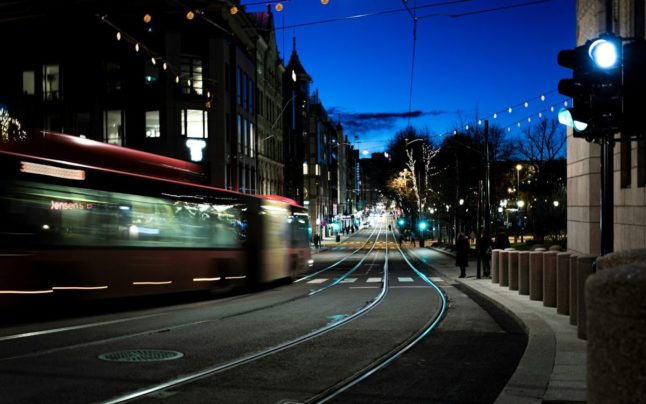Moving to Norway comes with its fair share of practical concerns – from navigating new healthcare and banking systems to figuring out the rental and property market and public transport, there are a number of novities that newcomers to the country need to figure out.
One of the big questions on the minds of a lot of people (as many usually don’t move to Norway with a car) is about getting around, especially if they’re settling down in the quieter corners of rural Norway or venturing up to the northern parts of the country.
READ MORE: The pros and cons of living in Norway
Norway has a magnetic pull, drawing in people from all over with its breathtaking scenery and promise of a high-quality life. But when it comes to navigating the transportation system, especially outside the big cities like Oslo and Bergen, things can get a bit murkier.
Is the Norwegian public transport system reliable? And what are the main issues locals across the country have with the public transport offer?
An efficient, (often) timely, and extensive system
We would be amiss if we didn’t start this deep dive by stating that Norwegian public transport is highly regarded for both its punctuality and efficiency.
Trains, buses, and trams often run on a strict schedule, with digital displays at most stations and stops providing real-time updates to passengers (just remember to wave to bus drivers, or they’ll often just drive right past you).
Vy, formerly known as the Norwegian State Railways (NSB), operates many of the train services that connect major cities and regions. Along with Vy, there are several other railway companies, including SJ NORD and Go Ahead Nordic.
In bigger cities like Oslo and Bergen, the public transport systems, including trams, metro lines, and city buses, are well-integrated, making urban travel relatively straightforward and reliable.
Furthermore, public transport coverage in the country is extensive, reaching even remote areas. The Norwegian government and transport authorities have made ensuring that even less populated areas have access to public transport a political priority, although the frequency might be less than in urban centres.
Ferry transport – often heavily subsidised by the authorities – also plays a crucial role in connecting coastal communities and islands inaccessible by road, making it an essential part of the public transport network.
Persistent challenges in some parts of the country
Despite the overall high level of service and coverage nationwide, living in rural Norway or the northern regions presents unique challenges when it comes to accessing public transportation.
EXPLAINED: The incentives to attract people to northern Norway
One of the most significant hurdles is the sparse population density and the vast distances between communities. In these areas, public transport routes are sometimes limited, infrequent, or even nonexistent, making it difficult for residents to commute to work, school, or reach essential services.
This lack of accessibility can lead to a greater dependency on cars, which may not be feasible for everyone, particularly those without a driver’s license or access to a vehicle.

Furthermore, the harsh weather conditions characteristic of northern Norway can further aggravate transportation difficulties.
During winter, heavy snowfall, icy roads, and freezing temperatures often disrupt public transport services, leading to cancellations or delays.
For residents reliant on buses or trains to travel long distances, these weather-related disruptions can significantly impact their ability to maintain regular schedules and fulfil their daily obligations.
In addition to weather-related challenges, the limited operating hours of public transportation services in rural and northern areas can pose significant obstacles for residents.
Many routes may only run during peak hours, leaving people with fewer options for travel outside of these times. This can be particularly problematic for those working irregular hours or requiring transportation for nighttime activities, such as social gatherings.
The effects of extreme weather
Even in major urban centres like Oslo, challenges with public transportation can arise, particularly during periods of extreme weather.
READ MORE: What you need to know about Norway’s weather warning system
Norway’s capital city is no stranger to harsh winters, with cold temperatures and heavy snowfall being common occurrences.
These weather conditions can significantly impact the operation of bus, metro, and train lines, leading to delays, cancellations, and service disruptions. As a result, commuters may face longer wait times and crowded vehicles, making it more challenging to reach their destinations on time.
The Oslo metro, known as the T-banen, and the extensive bus network are vital components of the city’s public transport system.
However, these services may experience reduced frequency or altered routes during snowstorms or icy conditions. This can result in longer travel times and increased congestion on alternative routes, further complicating the daily commute for the capital’s inhabitants.
Extreme weather events can also lead to disruptions along railway lines, including delays, cancellations, and reduced speeds for safety reasons.
READ MORE: What are your rights if your journey in Norway is disrupted by the weather
You can find the most recent weather warnings and traffic condition updates on varsom.no and the Traffic Control Centre’s website.



 Please whitelist us to continue reading.
Please whitelist us to continue reading.
Member comments